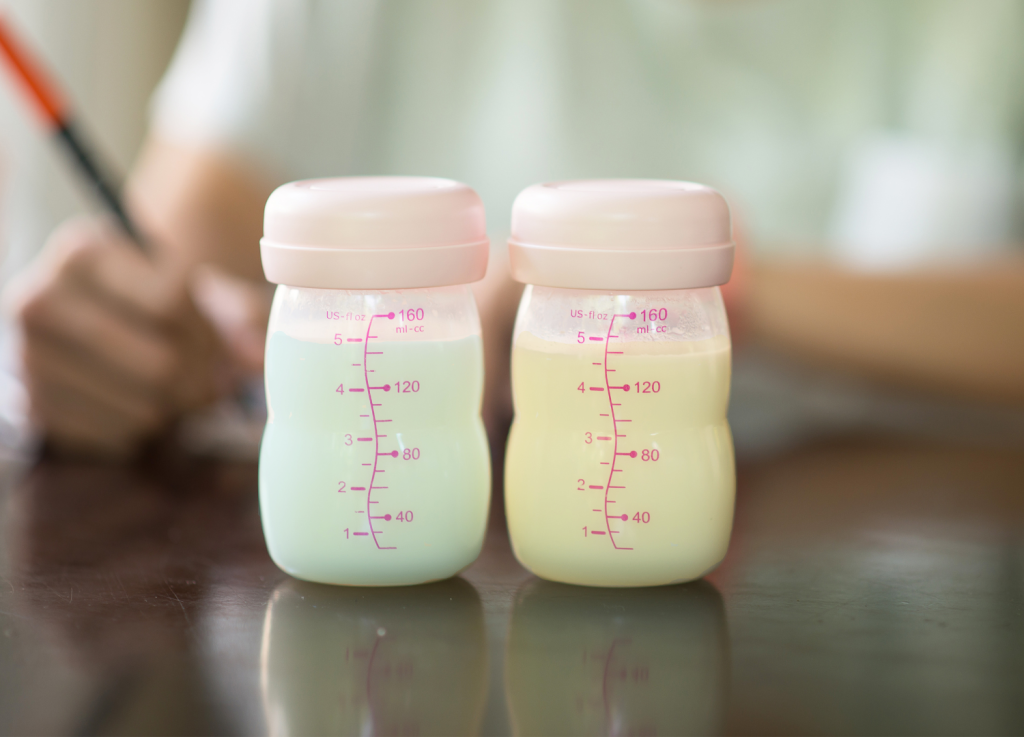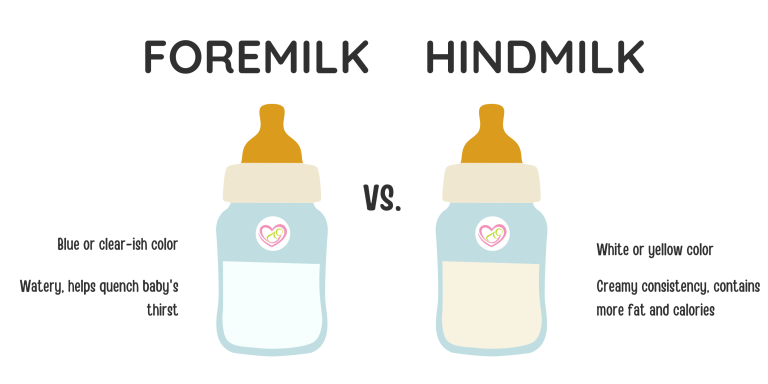The Truth About Foremilk & Hindmilk- Breast Milk Explained
February 16, 2023 2024-06-20 17:34The Truth About Foremilk & Hindmilk- Breast Milk Explained
Foremilk & Hindmilk

Breast milk is an extremely versatile and dynamic substance, providing all the essential nutrients to support infant growth and development at every stage. You may have heard the terms “foremilk” and “hindmilk” and wonder why the distinction? Is one better than the other? In this article, we will take a look at the difference between these two main parts of breastmilk and why they are so important!
Foremilk and Hindmilk Explained
Foremilk is the milk that is available to your baby first, when they first start to suckle. Its consistency is thinner due to a higher water content, and is composed mainly of lactose, carbohydrates, and a small amount of fat. Foremilk is important because it helps to satisfy your baby’s thirst and provides them with energy. It also helps to stimulate your baby’s digestive system, getting it prepared for the hindmilk to come!
As baby continues to nurse, they start pulling from milk deeper within the breast where fatty milk cells are stored. This is the hindmilk! It is thicker in consistency and is composed mainly of fat, proteins, and other essential nutrients. Hindmilk contains more calories due to higher fat content, helping to satisfy your baby’s hunger and providing them with growth-promoting nutrients. Specifically, hindmilk also has higher volumes of vitamins A and E.
It is important to note that foremilk and hindmilk are the same milk, just presented at different times to your baby with slightly different proportions. Despite common misconceptions, one is not more important than the other, and both are necessary to meet your little one’s needs.
A great way to think about this relationship is to picture a water faucet. When you turn it to hot, the water gradually gets warmer and warmer. It’s still the same water, just hotter now! The same goes for breastmilk, it is the same milk, it just changes in composition as you nurse/pump. Remember, both foremilk and hindmilk are essential, neither is “better” or “worse” than the other.
How Long Does It Take For Foremilk To Become Hindmilk?
After around 10-15 minutes of nursing, your baby will begin to pull milk from the fatty milk cells. Again, you may notice that it is a thicker consistency than the milk from when your baby first begins to breastfeed!
What Is Foremilk/Hindmilk Imbalance?
While very rare, it is possible to have an imbalance of foremilk to hindmilk. Also called a lactose overload, this is when your baby is consuming too much foremilk, thus consuming too much lactose. This imbalance can result in gas, colic, and loose green bowel movements in baby.
How Can I help My Baby Get Hindmilk?
Some ways that we can work around lactose overload is to do work on latch and positioning. By making sure your baby has a deep latch, they may be able to pull milk from the fatty ducts more easily. You also may try to feed more frequently, which avoids the build-up of foremilk. Lastly, be sure to not switch breasts while baby is nursing. Let them fully nurse at the breast to ensure they are also consuming hindmilk.
However, if you are concerned that you may have an imbalance, please reach out to a lactation consultant. We are always here to help you!




